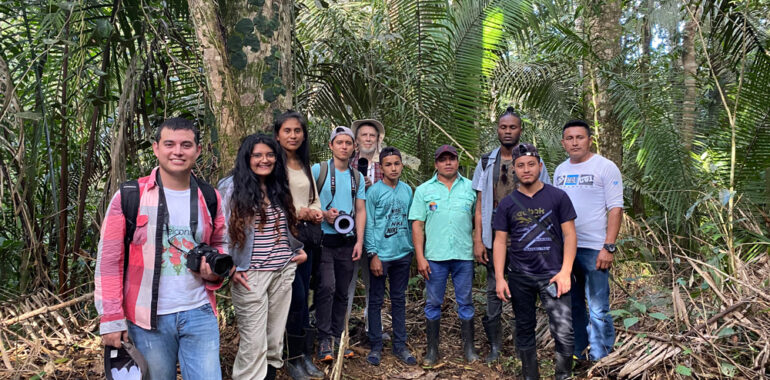This may not be the usual FLAAR blog filled with many facts about nature or science. In fact, it may blur the line of the organization’s focus. However, it will hopefully link with its main topic: the relationship between indigenous communities and biodiversity. As you will be able to read in the following paragraphs, Indigenous communities value nature, and they can show us, the rest of the world, how to care for nature too.
“Despite representing less than 5 percent of the world’s population, Indigenous peoples steward more than a quarter of Earth’s land and seas and protect 80 percent of global biodiversity (McCoy, 2023)”.
Eventually, we’ll get to the main topic but first, let’s start with some questions intended for nothing else than getting the conversation going.
Imagine you were born somewhere else, surrounded by different people, and in a different context. Do you think you would have the same core values?

Indigenous communities living in the Maya Biosphere Reserve, in Guatemala, have developed some of the most successful management models for forest conservation in the world. Maya Biosphere Reserve, Nov., 2021. Photo by Haniel López.
Figuring that out may take you a few minutes but do you think that, for instance, you would still be an honest person, if honesty is what you value most? Or perhaps, would you still be a friendly person, if values such as kindness, friendship or community are important to you? Do you think you would still appreciate objectivity, if you value logic? Or perhaps, would you still value ambition and growth, if those are values that guide your decisions? If you feel like it, take a few minutes to think about it, as these questions may provoke you to do some reflection.
These questions could go on and on, as everyone treasures different things in life and has different core values. Independence, popularity, innovation, empathy, equilibrium, justice, creativity, unity, risk, adventure, authenticity, patriotism, freedom, among many many others could be the values that you care deeply about.
Now, what if instead of growing up in the city, you grew up surrounded by all sorts of ecosystems? Would your values be the same?
What does this reflection have to do with indigenous communities and biodiversity?

Xateros and chicleros are people who live in the rainforests of the Maya Biosphere Reserve temporarily to harvest the Xate leaves (Chamaedorea spp.) or the látex of the chicozapote tree (Manilkara sapota). They may be among the indigenous people from Guatemala who spend more time of their lives in contact with nature. In this photo you can see the thatch structures they use as camp bases while they live in the forest. Forest Management Unit La Gloria, May 2022. Photo by Dr. Nicholas Hellmuth.
Once you have the chance to reflect on your own values, and even better, on how different you would be if you were raised in a different context, you will contemplate how we all hold different things close to our heart. Having that in mind, we can learn from other people and other realities.
On that account, and in commemoration of the International Day of World’s Indigenous People, we at FLAAR would like to invite you to turn your attention to the relationship that indigenous people around the world hold with the environment, and how nature has molded most of their values. Hopefully you will learn from them in this article.
La Esperanza, Telemán, Alta Verapaz. Jul. 21, 2018. Photo by Melanny Quiñonez.
Most indigenous communities have a close relationship with nature. According to what Cutsumpas (2023) calls a path to environmentalism (that anyone can experience), one could say that the interaction indigenous people have had with nature has led them to feel excitement and empathy for nature, and thus, to take care of it. In other words, their values have been molded by the relation they have with the Earth, and therefore, many of their decisions revolve around protecting its natural resources.
Moreover, it is very reasonable that they take care of nature given how much time many of them have spent throughout their lives (and still spend) in contact with the living world. Not to mention, how many natural phenomena and marvels they may have witnessed in wild and rural areas.
From what we at FLAAR have learned from indigenous communities, we have observed that they notice both the smallest of the interactions in the natural world, as the great and immense forces that impact in the ecology of every corner of our planet.
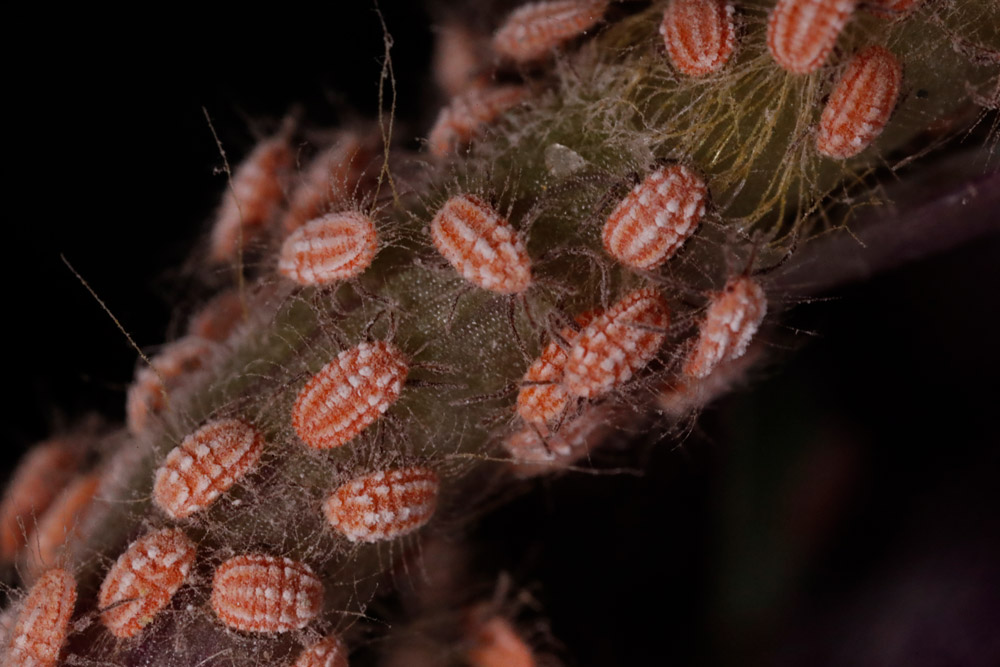
Niij is what indigenous communities in Guatemala call this insect, more commonly around the world as cochinilla, cochineal or lacquer insect. This insect belongs to the Coccoidea family and has been used since Pre Columbian times by indigenous communities to produce lacquer. FLAAR studio, May 16, 2017. Photo by Erick Flores.
For instance, in some of our expeditions local guides from indigenous communities have made it clear how familiar they are with one of the smallest and most common, yet marvelous animals: ants. They are also familiar with their behaviors.
On one occasion, just a few moments after the local guides had told us about this behavior, we saw ambush ants from the Petén rainforests creating an insect stampede, hunting anything that stood in their way, and causing all sorts of insects to run away. On another occasion, the FLAAR expedition team was victim to an ant invasion that occurred three times in the same night. Thousands of these insects climbed the walls and roof of the wood cabins where the team was staying in, and as some colleagues recall, there were so many ants that their rush sounded like a drizzle. Local people from an indigenous community shared with our team that they believed ants had this behavior everytime anything bad would happen, and curiously enough, the pandemic hit Guatemala two months later.
On the other hand, local indigenous communities have also taught our team about the local uses of many different plants, which have been used for generations, leading back to the Maya civilization.
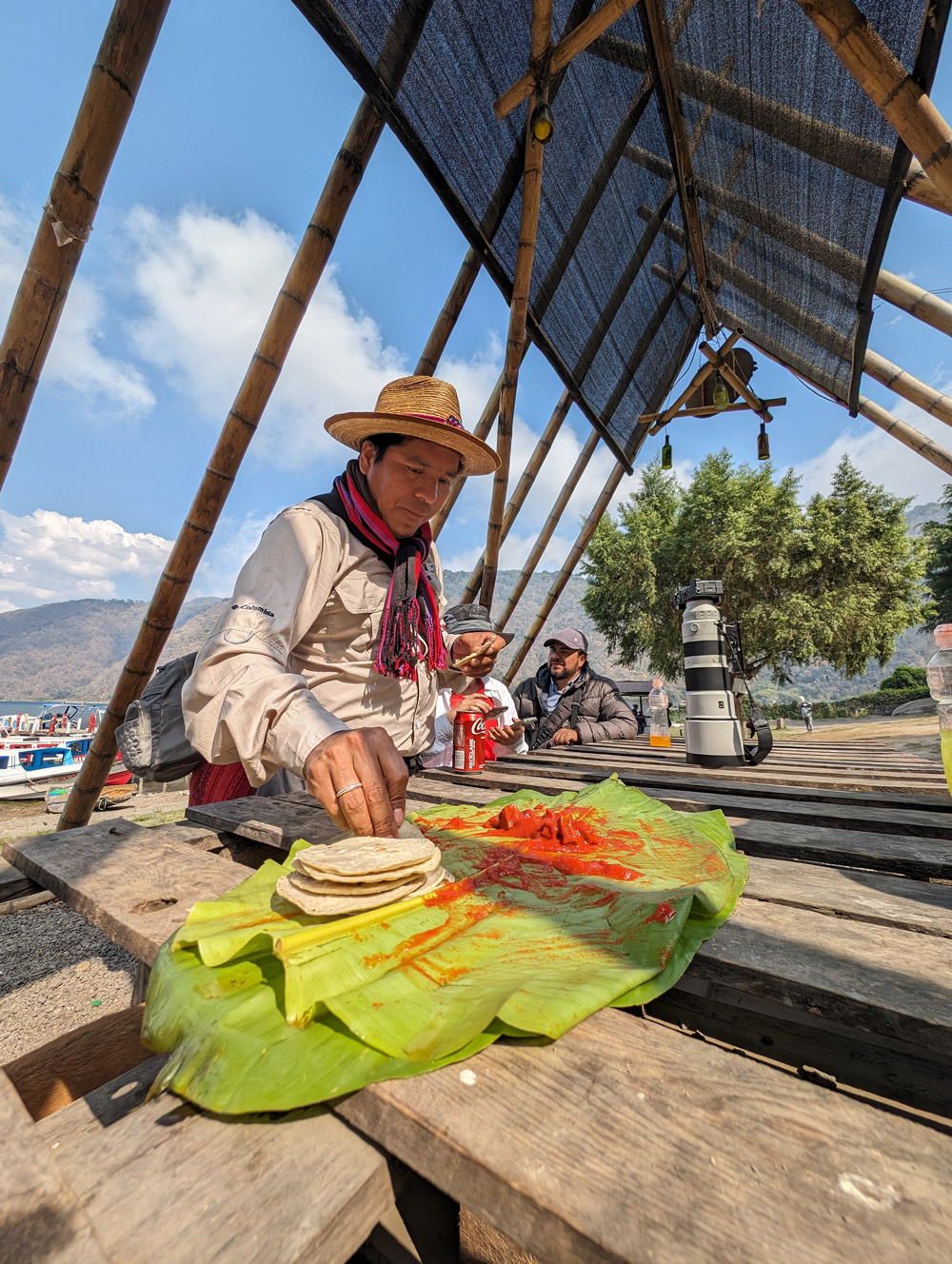
The indigenous communities that live within the volcanic chain of Guatemala have preserved many of their traditions and knowledge about nature. Here, they were sharing with the team of FLAAR Mesoamérica a local dish called patin, which is cooked, wrapped and served in maxán leaves (Calathea sp.). Atitlán, Feb. 2024. Photo by Sergio D. Jerez.
They are aware of nature’s big forces too. For instance, they know how climate change is affecting our planet, which they also know is linked with bigger phenomena such as the pattern of the rain and the refreshing effect of forests on global temperature.
All this knowledge is exceptionally valuable. We at FLAAR and FLAAR Mesoamérica acknowledge it and that is exactly what motivates us to continue with our mission to document not only the biodiversity of species in Mesoamérica, but also register the local ethnobiological uses and relations that local communities have hold for centuries with the living organisms that surround them. In fact, indigenous communities have been our main teachers to discover the wonders of this region’s natural diversity.
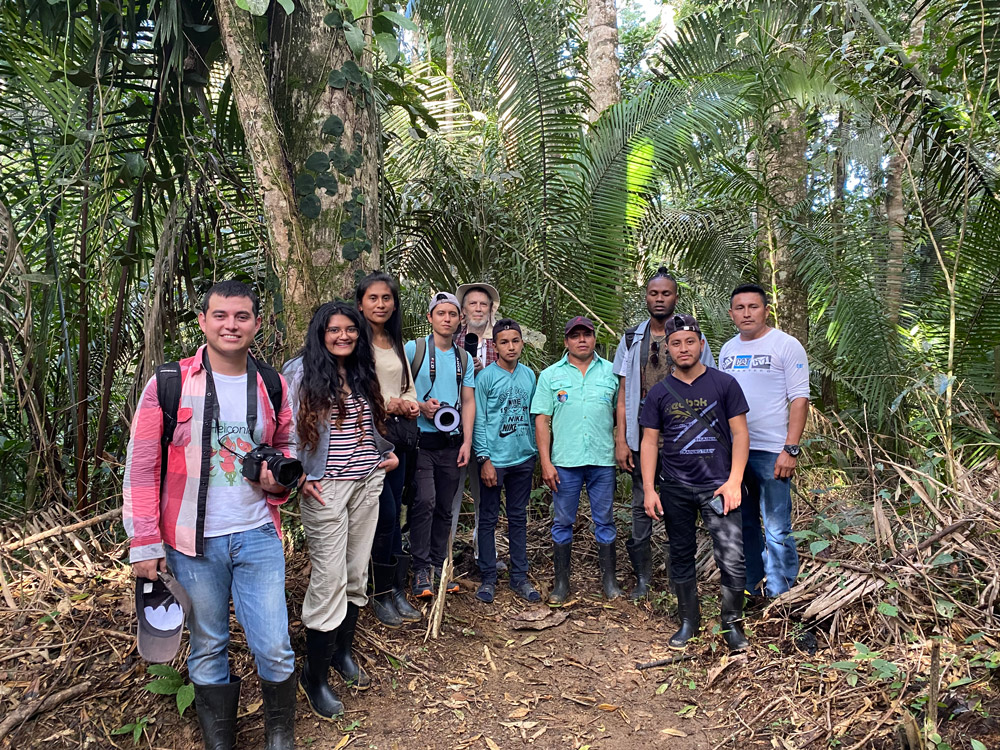
During our documentation project in Livingston, Izabal, we had the valuable support of local guides from q’eqchi and garifuna communities. Here, the FLAAR staff was assisted by Cornelio Macz, Esteban Macz, Óscar Santos, and Víctor Guzmán. Protected Biotope Chocón Machacas, Jan. 2021. Photo by María Alejandra Gutiérrez.
Now, turning back to do some retrospection, could you say you know how ants, one of the most common insects in the world, behave in your surroundings? Do you know the plants that grow in your vicinity and their uses? Are you aware of the weather patterns in your regions and even, how they have changed in the last few years?
In this time and era when many people are moving to the cities, and when western culture with its own predominant values and ideas has spread worldwide through technology, many of our societies’ values have evolved and transformed as well. Given that most cities have lost touch with nature, it’s not surprising that their inhabitants, and probably you as well, don’t care deeply about nature. At least in the same way many indigenous people do. But this is probably because you haven’t had enough chances to interact with it, and as it was mentioned earlier, because you may have other things and values that you care more about.
“When indigenous people have the right to govern their land, biodiversity increases and forests are protected (McCoy, 2023)”. For instance, the indigenous communities that live in the Maya Biosphere Reserve, in Guatemala, have set and example in the world on successful and sustainable administration of wild areas, while promoting their own social development.
However, just as big an impact this urban migration has provoked in many of our lifestyles and ideas, climate change and other environmental challenges, have also made us notice nature back.
Currently, we have gained a better understanding of how values related to nature and its conservation are important for the endurance of our societies. However, many of us still need to develop such values, so that they become tangible attitudes that later determine our actions and decisions.
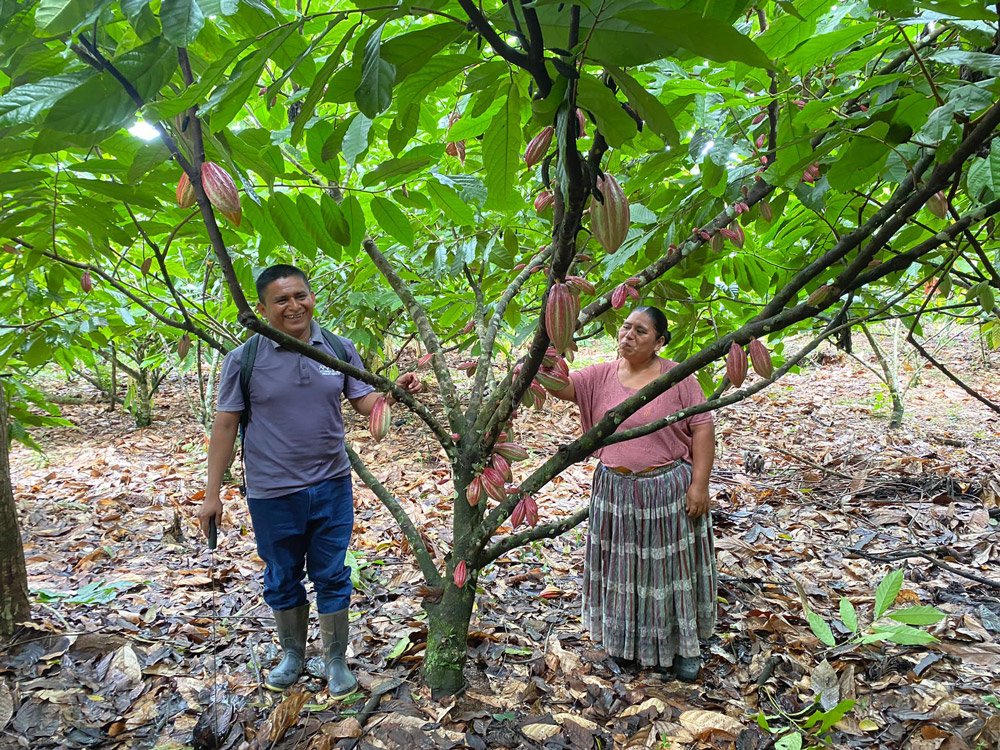
Indigenous communities are the main producers of cacao in Guatemala and Latinoamérica, which is commercialized all around the globe. Alta Verapaz, Dec. 2023. Photo shared by Sergio D. Jerez.
This is exactly where we can all learn from many indigenous communities. As Avatar’s Pandora main creator and environmental advocate, also considered as one of America’s best movie directors, has stated:
(…) the indigenous people are the caretakers. They’re the ones that have the power in our world, right now on earth, to reconnect us with a vision of nature, that’s more protective, and cooperative, and harmonious, than the one we’re currently living in (…) we have to kind of come full circle. We have to take our civilization, keep all the good of it, and we have to somehow reconnect ourselves with the balance, the great balance (…) (James Cameron, 2022).
As we commemorate the International Day of World’s Indigenous People, we encourage you to look at the nature related values that many indigenous communities carry throughout their lives. They are the ones who can teach us to reconnect with the Earth and more importantly, to reconsider many of the ideas and values we hold at the present, which sadly have led us to destroy our beautiful planet and the thousands of organisms that share it with us.
References
CAMERON, James
2022 James Cameron & Robert Rodriguez, Directors on Directors. YouTube, uploaded
by Variety. Dec. 14, 2022.
https://www.youtube.com/watch?v=MZd8oPe6mig&t=1640s
CUTSUMPAS, Nick
2023 The Secret Relationship Between Plants and People. YouTube, uploaded by Tedx
Talks. Jul. 23, 2023. https://www.youtube.com/watch?v=4AgsttQq-Mw&t=398s
GÓMEZ, Thelma
2020 El experimento comunitario de Guatemala que enseña al mundo cómo conservar
un bosque. Mongabay. https://es.mongabay.com/2020/06/guatemala-comunidades-que-conservan-el-bosque-fao/
MCCOY, Mary K.
2023 3 ways Indigenous knowledge protects nature. Conservation International.
https://www.conservation.org/blog/3-ways-indigenous-knowledge-protects-nature
NATIONAL GEOGRAPHIC
n.d. James Cameron. Explorer Home.
https://explorers.nationalgeographic.org/directory/james-cameron
Written by Sergio D’angelo Jerez

